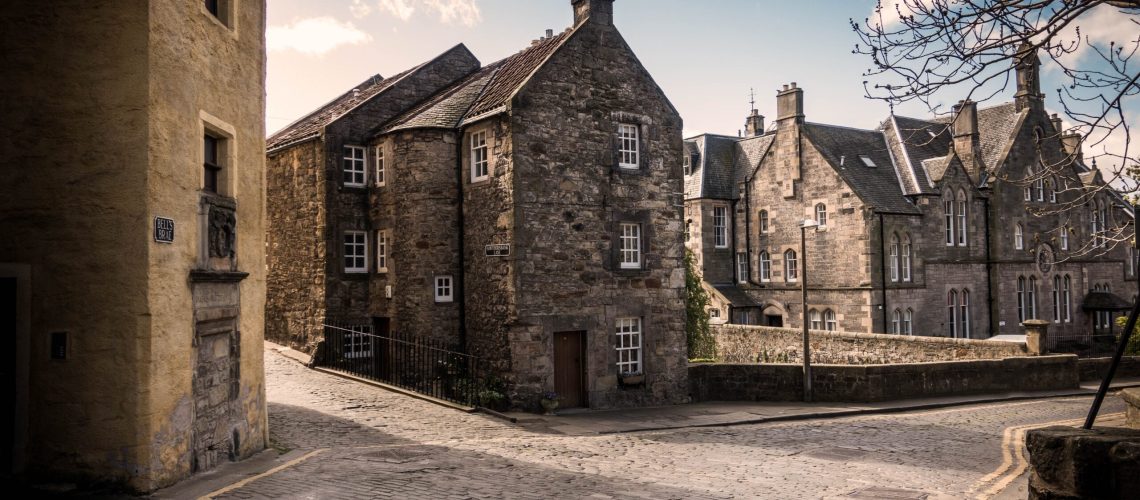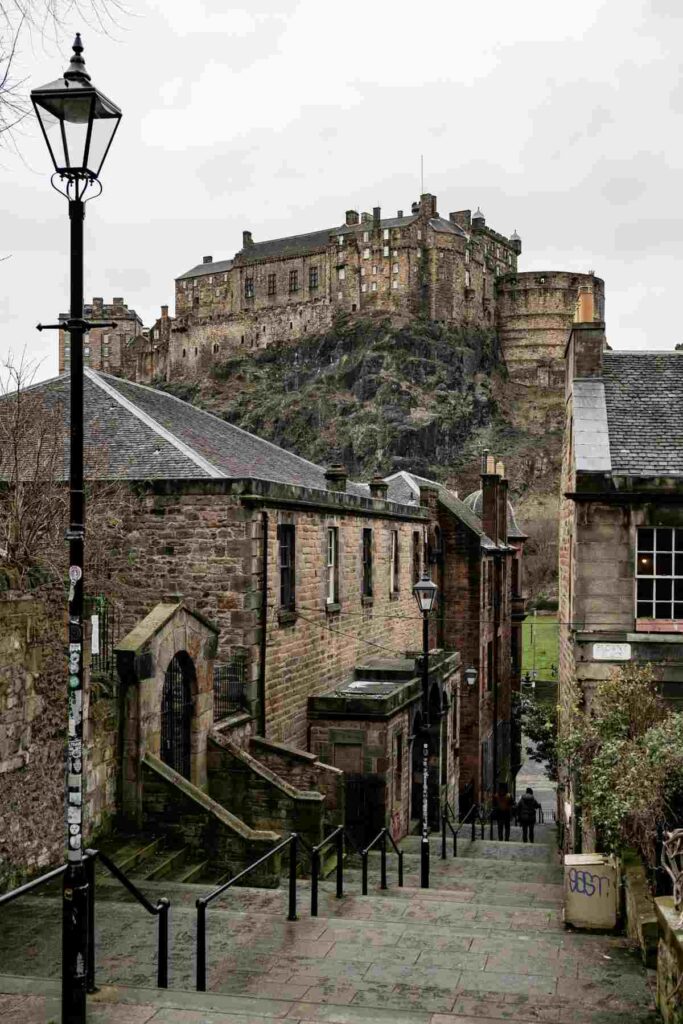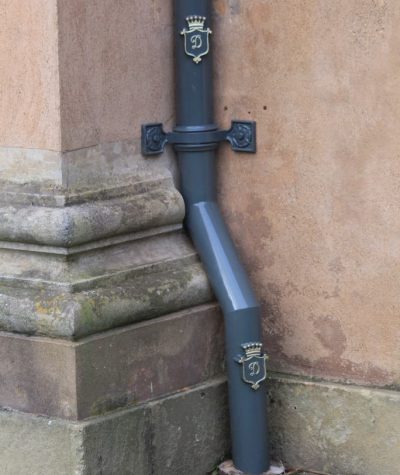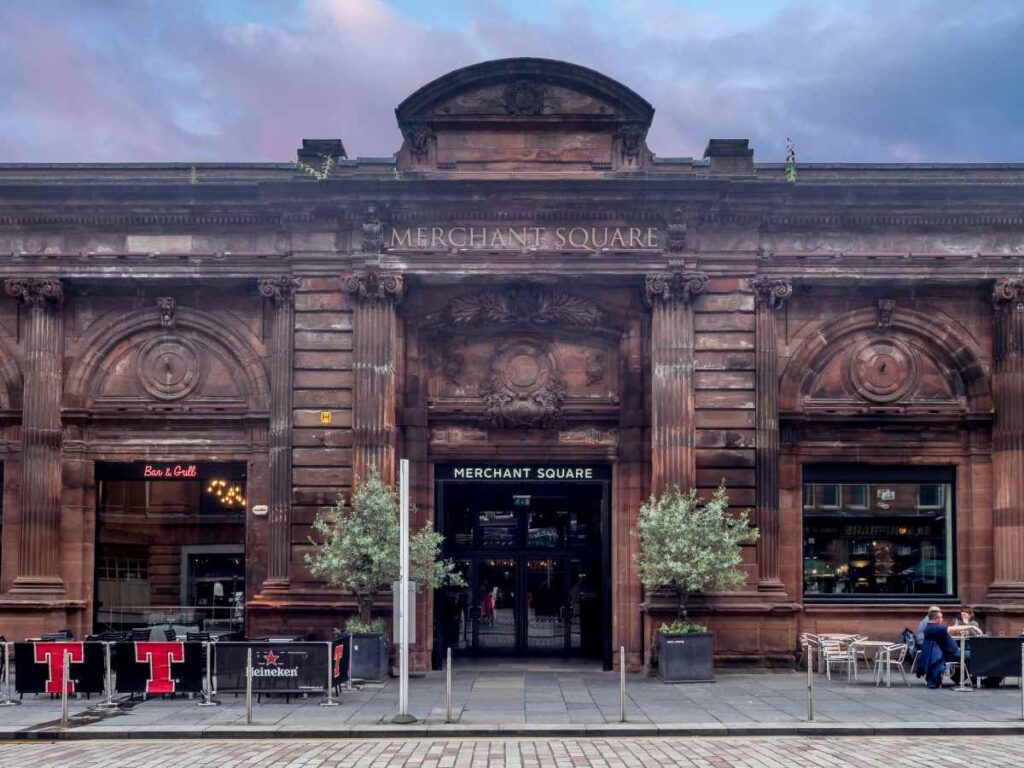


Scotland’s architectural landscape is a tapestry of history, innovation, and artistry. Cast iron stands out for its durability, versatility, and inherent beauty among the materials that have played a crucial role in shaping this landscape. Cast iron rhones (gutters) and pipes, far from being mere functional elements, are a testament to Scotland’s industrial past and a key component of its historic buildings. Their intricate designs and elegant forms are a source of admiration for architecture enthusiasts and historians alike.
The use of cast iron in Scotland’s architectural heritage is both widespread and profoundly significant, encompassing a range from the imposing grandeur of Edinburgh Castle to the rustic charm of Highland cottages. This material’s prominence is not merely a matter of aesthetics; it is deeply rooted in the country’s industrial and architectural history, serving as a testament to Scotland’s pivotal role as a pioneer during the Industrial Revolution of the 18th and 19th centuries, a fact that fills preservationists and those interested in cultural history with a sense of pride in the nation’s heritage.
During this transformative period, Scotland emerged as a beacon of industrial innovation, with cast iron playing a pivotal role in signalling the nation’s progress. The material’s adaptability and strength enabled architects and builders to push the boundaries of design and construction, heralding a new era of architectural ingenuity. Cast iron’s capacity for intricate detailing allowed for creating elaborate facades, ornate railings, and decorative elements that added beauty and structural integrity to buildings.

Moreover, cast iron’s robustness proved advantageous in Scotland’s challenging weather conditions. Its resistance to decay and the elements made it an ideal choice for external architectural features, ensuring longevity and durability even under the relentless assault of rain, wind, and salt air. This resilience was crucial in preserving the architectural integrity and historical significance of Scotland’s buildings, from the lofty towers of its castles to the cosy hearths of its rural homes.
Cast iron also facilitated innovations in architectural engineering, such as developing large, clear-span structures. This was especially important in the construction of public buildings, bridges, and industrial facilities, where the strength and flexibility of cast iron components were integral to architectural advancement. Consequently, cast iron contributed to more than just the aesthetic enhancement of Scotland’s architectural landscape. Still, it was instrumental in the evolution of building techniques that paved the way for modern construction practices.
In sum, the significance of cast iron in historic Scottish buildings cannot be overstated. It is a material that embodies the spirit of innovation that characterised Scotland’s Industrial Revolution, representing a blend of aesthetic beauty, structural durability, and engineering prowess. As such, cast iron remains an enduring symbol of Scotland’s architectural heritage, illustrating the country’s historical trajectory from an industrial powerhouse to a nation proud of its cultural and architectural legacy.
Historic Scotland, now part of Historic Environment Scotland, has been instrumental in conserving the nation’s architectural heritage. They recognise the importance of cast iron in historic buildings and have undertaken numerous projects to restore these elements to their former glory. The conservation process often involves meticulous research to replicate the original casting methods and designs.
The use of cast iron in the construction and restoration of buildings has a rich heritage, particularly evident in Scotland’s historic and listed buildings. This material, known for its robustness and longevity, is witnessing a resurgence in contemporary architectural practices. The reasons for this revival are manifold, but chief among them are cast iron’s exceptional durability and its potential for recycling, which position it as a sustainable material for both new constructions and renovation projects.
Cast iron’s remarkable durability is critical in its continued use in modern architecture. Its resistance to wear and environmental damage makes it ideal for the harsh Scottish climate, protecting buildings from the relentless wind, rain, and occasional frost. This resilience is especially valued in restoring historic and listed buildings, where preserving structural integrity and historical accuracy is paramount. Cast iron rhones (gutters) and pipes are crucial in these contexts. They ensure adequate drainage, safeguarding the building’s foundation and walls from water damage and maintaining the aesthetic integrity of historical constructions. Their ability to withstand the test of time without significant degradation makes cast iron an indispensable resource in preserving Scotland’s architectural heritage.

Moreover, the sustainability of cast iron cannot be overstated. In an era increasingly defined by environmental concerns, the recyclability of cast iron presents a compelling advantage. Cast iron components can be melted down and recast into new shapes and forms without losing quality, allowing architects and builders to reuse materials innovatively. This recycling process reduces waste and the need for new raw materials, aligning with global efforts towards more sustainable construction practices. Furthermore, using recycled cast iron in new constructions and renovations contributes to the environmental sustainability of building projects. It adds historical depth and character to modern structures, bridging the past with the present.
Architects are capitalising on these attributes, integrating cast iron into contemporary designs with a creative flair that honours the material’s historical significance while propelling it into the future. Whether in the form of bespoke rainwater systems on listed buildings, architectural accents in new constructions, or structural elements in avant-garde designs, cast iron is finding a new lease of life in modern architecture. Its versatility allows for various functional and decorative applications, underscoring its adaptability to traditional and contemporary architectural styles.
The ongoing use of cast iron in modern architecture, especially in the context of historic and listed buildings, is a testament to its enduring appeal and functionality. By leveraging cast iron’s durability and sustainability, architects and conservationists are preserving Scotland’s architectural legacy and contributing to a more sustainable future, ensuring that cast iron remains an integral part of Scotland’s architectural narrative.
The conservation and restoration of historic buildings is a crucial endeavour ensuring the longevity and integrity of architectural heritage, especially in Scotland’s rich historical landscape. Among the various materials that have been the focus of such restoration efforts, cast iron stands out for its significance in the structural and aesthetic makeup of many historic edifices. A prime example of the meticulous and dedicated approach to preserving this legacy is the restoration of the cast iron façade of the Victorian-era Market Building in Glasgow.
This project restored and revived the building’s historical and architectural essence. The Victorian era was a period of industrial and architectural innovation, with cast iron becoming famous for its practical qualities and aesthetic versatility. With its intricate cast iron façade, the Market Building embodies the time’s technological advancements and artistic sensibilities. Over the years, however, exposure to the elements and urban pollution had taken their toll on the cast iron, obscuring its beauty and compromising its integrity.

Therefore, the restoration effort was a meticulous process that involved physically refurbishing the cast iron and carefully studying its historical context. Specialists in heritage conservation undertook detailed analyses to understand the original manufacturing techniques and artistic finishes of the façade’s cast iron components. This research was crucial in ensuring the restoration work was faithful to the original craftsmanship and design intentions.
Moreover, the project highlighted the architectural significance of cast iron work in the Victorian era and beyond. By restoring the façade to its former glory, the project team demonstrated cast iron’s potential to convey elegance and intricacy, characteristics often associated with more traditionally ‘noble’ materials like stone or wood. The restored façade now stands as a testament to cast iron’s durability, able to withstand the test of time with proper care and maintenance.
The Market Building restoration is one example of the broader efforts to preserve Scotland’s cast iron heritage. Such projects underscore the importance of cast iron in the region’s architectural history, celebrating its role not only as a structural element but also as a medium of artistic expression. Through these restoration endeavours, the legacy of cast iron craftsmanship is preserved for future generations, ensuring that the historical appearance and significance of buildings like the Market Building in Glasgow are maintained as part of Scotland’s rich architectural tapestry.
The enduring presence of cast iron in Scotland’s architectural heritage is a testament to its timeless appeal and functional resilience. The collaborative efforts of conservationists, architects, and the public have played a pivotal role in safeguarding this legacy, ensuring that cast iron continues to be celebrated for its historical and aesthetic significance. As we project into the future, the narrative surrounding cast iron in Scottish architecture is poised to evolve, guided by the dual imperatives of preservation and innovation.
Balancing these imperatives is a complex challenge. Preservation efforts focus on maintaining the integrity and authenticity of historic and listed buildings where cast iron features prominently. This involves meticulous restoration work, often requiring specialised skills to replicate the original craftsmanship and techniques used in cast iron production. Conservationists are also tasked with educating the public and stakeholders about the importance of these endeavours, fostering a collective sense of stewardship over Scotland’s architectural treasures.
On the other hand, innovation with cast iron involves integrating this traditional material into contemporary design fabric. Architects and engineers are exploring new ways to utilise cast iron for its historical resonance, structural capabilities, and sustainability benefits. This includes employing cast iron in modern construction projects, where its durability and aesthetic flexibility can complement more recent materials, creating a dialogue between the old and the new. Additionally, the adaptability of cast iron to various design aesthetics makes it a versatile choice for exterior façades and interior details, bridging the gap between functionality and artistry.
The sustainability aspect of cast iron also plays a significant role in the future of Scottish architecture. As the construction industry moves towards more environmentally friendly practices, the recyclability of cast iron becomes increasingly valuable. The ability to melt down and repurpose cast iron for new projects reduces waste and conserves resources, aligning with global sustainability goals. This circular approach to material use underscores the potential for cast iron to contribute to a more sustainable architectural practice that values the past while looking towards a greener future.
Moreover, the continued use of cast iron in Scottish architecture offers opportunities for technological advancement. Innovations in casting techniques and material treatments could enhance cast iron’s performance and versatility, opening up new possibilities for its application in construction. Such advancements could further cement cast iron’s role in Scotland’s architectural identity, ensuring its relevance and adaptability in changing design trends and environmental considerations.
In conclusion, the future of cast iron in Scottish architecture is not just about preserving a legacy; it’s about reimagining and revitalising this traditional material for the modern age. Through a thoughtful blend of preservation and innovation, cast iron can continue to enrich Scotland’s architectural landscape, embodying a heritage of craftsmanship while embracing the possibilities of the future. The journey of cast iron in Scottish architecture is far from complete, and its continued evolution will undoubtedly contribute to the richness and diversity of Scotland’s built environment.

Tuscan Foundry is a venerable institution in the realm of architectural conservation, particularly renowned for its supply of cast iron rhones and pipes for listed and historic buildings across Scotland. Since its establishment in 1893, Tuscan Foundry has not only supplied essential materials for restoration projects but has also offered a comprehensive site surveying service. This service ensures that each piece of cast iron is tailored to meet the specific requirements of each unique heritage site, preserving the integrity and authenticity of Scotland’s architectural treasures. Over the decades, Tuscan Foundry has become synonymous with quality and craftsmanship, upholding a legacy that bridges the past with the present, ensuring that Scotland’s historic buildings retain their original beauty and functionality for generations to come.
*Cast iron was widely used during the Industrial Revolution due to its durability, ease of production, and versatility in design, making it popular in Scottish architecture for both functional and decorative purposes.*
*Conservation challenges include dealing with rust and corrosion, replicating original casting techniques, and matching historical designs and materials.*
*Historic Scotland approaches restoration with meticulous research and collaboration with experts to ensure restoration work is as accurate and authentic as possible.*
*Yes, due to its durability and recyclability, cast iron is considered a sustainable material, making it suitable for both restoration and new construction projects.*
*One example is the restoration of the Victorian-era Market Building in Glasgow, which showcased the architectural significance and craftsmanship of cast iron.*
*Through education, workshops, tours, and publications, Historic Scotland engages the public in understanding and valuing the preservation of cast iron elements.*
*The future of cast iron in Scottish architecture looks promising, focusing on balancing preservation with innovative uses in modern design.*